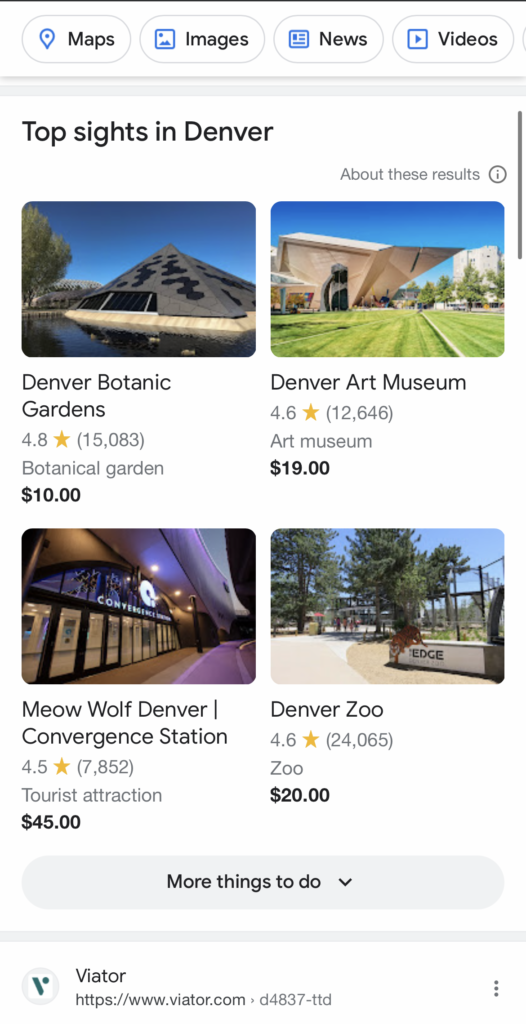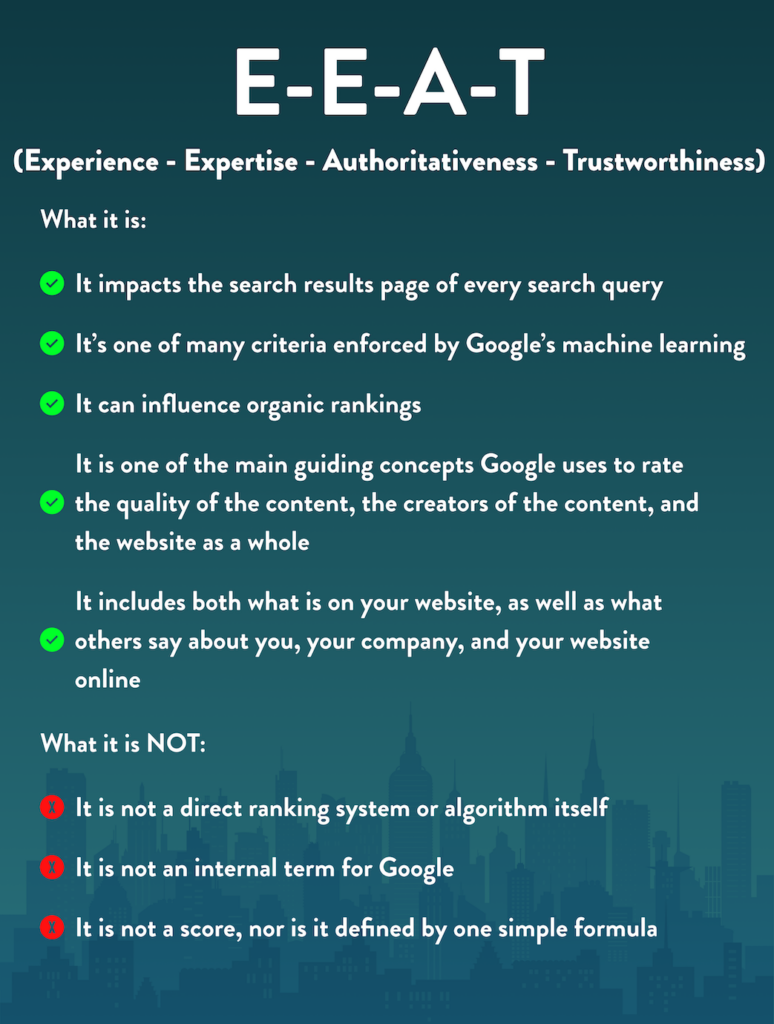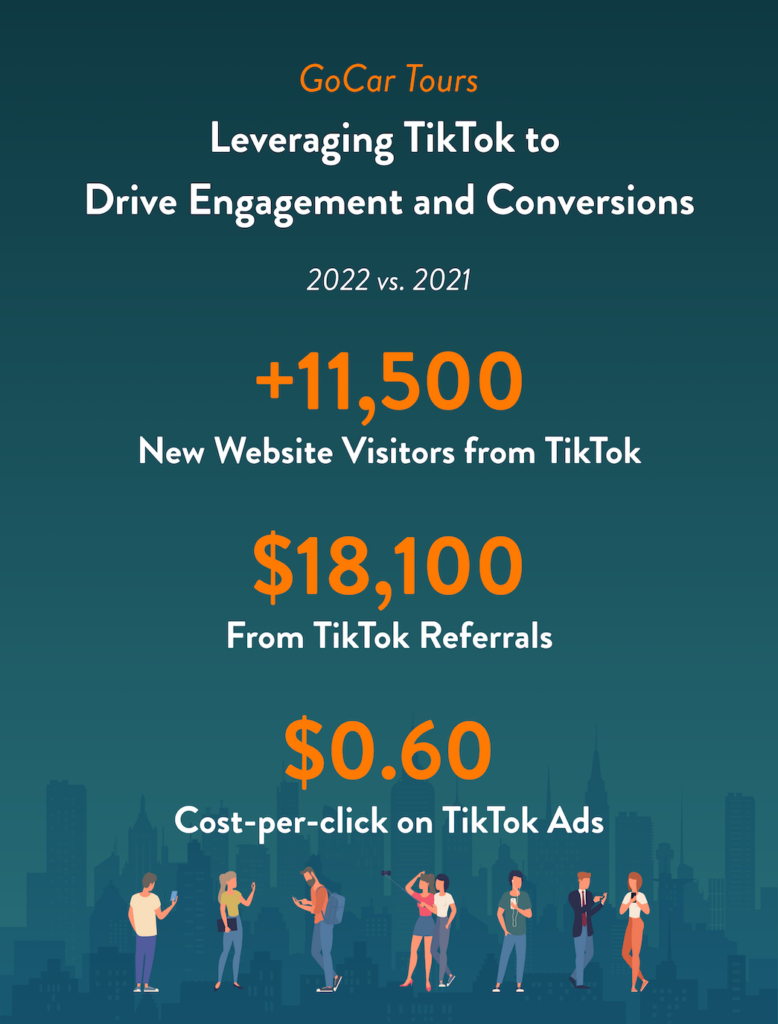
In many ways, 2022 was yet another outlier year in the tours and activities industry. Between surging fuel costs and aggressive inflation, changes to traveler and consumer behavior brought new and interesting challenges. Despite another year impacted by unique external factors, operators remained agile, creative, and adaptive in the dynamic landscape of 2022.
Whether it was offering new tours or experiences that filled an unmet demand in the market or doubling down on core offerings, TOMIS clients continued to achieve strong year-over-year growth amid these various surprises.
Seasonal Shifts & Travel Trends
Many operators experienced different seasonal trends in 2022 compared to previous years. For some, the busy season came earlier this year—peaking at the start of spring rather than in the summer. Others experienced a slower tapering-off into the shoulder season, with people traveling longer into the fall and early winter.
The Return of Corporate Tours & Team-Building Experiences
With people gathering more consistently in person this year than since before the Covid-19 pandemic, corporate and team-building events became commonplace again. Operators put renewed efforts behind promoting and booking corporate tours and experiences. This was especially prevalent in urban centers and tech hubs, such as Seattle and San Francisco, that were slower to rebound from Covid.
Operators with corporate offerings leveraged integrated, multi-channel strategies to reach these audiences. Some of these strategies include:
- Paid Social campaigns with geographic targets consisting of areas with high concentrations of corporate offices or headquarters, as well as targeting Facebook users with certain job titles
- Google Ads campaigns targeting users looking for team-building activity ideas
- Blog content guides to the best team-building activities in X city
- Targeted lead capture opt-ins and email automations to nurture the corporate audience
Operators Expand into Multi-Location Businesses
While the last few years have been challenging for many, a number of operators have been able to capitalize on shifting consumer trends and expand their business into new locations. Many sought markets that would complement their existing locations’ seasonality—for example, expanding from their flagship location in Chicago to a new one in Miami.
At TOMIS, we had strategy discussions with clients around franchising or pursuing a true business expansion under the same ownership. There were strategy discussions around how to structure websites, plan content, and manage social media profiles. Some operators chose to put dedicated corporate-level marketing behind all locations, while others left it up to the individual business locations to set their strategy and budget to achieve goals. Some operators applied a blueprint across all locations—from operations to marketing. Others recognized key market differences, customizing their operations and marketing strategies to take advantage of the opportunities.
Going into 2023, these operators are optimistic and excited about the opportunities of a multi-location business. They see themselves establishing a strong brand that will carry across to each location.
SEO in 2022: A Big Year for Google Algorithm Updates
Google certainly kept us on our toes this year! Between frequent updates to its algorithms and search features, it’s always exciting to see what they’ll do next.
When it comes to SEO, best practices will shift and change, and we must adapt. SEO is a long game, and at TOMIS, we build our long game based on Google’s documentation and what we’re observing in real time with our clients.
Extranomical Tours —
Technical SEO Strategy Contributes to Year-Over-Year Growth in Organic Traffic & Revenue
In leveraging technical SEO implementation, internal linking best practices, and additional optimized on-page headings, this San Francisco tour operator experienced organic traffic growth in a competitive market. These optimizations brought qualified traffic during their high season that converted into online revenue.
+84.15%
Increase in organic traffic
+112%
Increase in online revenue from organic traffic
2022 vs. 2021
Key Google Search Engine Updates
Updates to Google Search ranking systems in 2022 have meant changing trends in organic traffic. You may have noticed in your own Google searches some of the ways the search engine results pages (SEPRs) have changed. Instead of seeing a long list of standard text options, Google has continued rolling out more interactive search features, such as image carousels, accordion-style lists of “people also ask,” featured snippets, and of course, the new Things To Do visual results.



In addition to these new types of search results, the way Google’s systems analyze the quality of those results is evolving. Google’s Quality Rater Guidelines (QRG) is an extensive document that provides guidance around how the quality of a website and its content are assessed. While the QRG does not directly impact a site’s ranking, it acts as a guidebook for where Google wants its algorithms to go.
E-E-A-T
One of the most recent and notable updates to the QRG was the addition of an extra “E” to Google’s concept of “E-E-A-T.” This stands for “Experience, Expertise, Authoritativeness, and Trustworthiness.” These four concepts represent various dimensions of quality Google uses to assess its search results.
Google places trust at the center of this concept that evaluates a content creator’s first-hand experience, expert knowledge, and genuine authority on a topic. Google said, “Trust is the most critical component of E-E-A-T, because untrustworthy pages have low E-E-A-T no matter how Experienced, Expert, or Authoritative they may seem.”

Want to know more? TOMIS Marketing Manager Gaby Gebo shares a quick lesson on how E-E-A-T relates to tour operators.
Beyond the Keyword: Optimizing for Search
Keywords have been a pillar of SEO since the beginning. While they aren’t going away, and a holistic keyword strategy is still integral to your SEO, the depth to which Google’s systems are able to understand the user’s intention behind search queries is evolving.
What Are People Searching?
According to SEO industry resource Ahref, about 15% of daily Google searches are new and have never been searched before. Keywords with fewer than 10 searches per month account for almost 95% of Afref’s U.S. keyword database. Long-tail keywords, aka longer and more specific keyword phrases (for example, “best one-day sightseeing tours in New York”), often fall into this category. While these longer search queries tend to have a lower search volume than a more competitive, broad keyword (for example, “New York tours”), they are typically used closer to a point of purchase.
The Case For High-Quality Website Content
So, how do these keyword trends play into an SEO strategy? Well, that’s where high-quality content comes in. Google’s goal of creating a positive user experience has resulted in an increasing emphasis on high-quality content—with its search ranking systems prioritizing user intent over exact keyword matching when serving search results. Google wants to provide answers to users’ questions, which means tailoring the SERPs (search engine results pages) to each unique user.
This concept is exemplified in Google’s recent helpful content system update. As Barry Schwartz summarizes in a Search Engine Land article, “this algorithm update aims to help searchers find ‘high-quality content…’ Google wants to reward better and more useful content that was written for humans and to help users.”

In addition to creating high-quality, useful content that demonstrates your expertise and builds trust with users, the placement of the content on a site should also have intention behind it. When a user lands on a certain website page, what do they need to know right away? What questions should you answer quickly and clearly? Understanding user behavior on your website can inform the answers to these questions.

Using Real Data to Inform a Content Strategy
The TOMIS AI ChatBot has been an invaluable tool when it comes to collecting first-party data to inform a content strategy. Having access to chat logs from a website’s ChatBot provides insight into what types of questions customers are asking. This data can be used to determine the most helpful and relevant content for users on a website, while also saving operators time by not needing to answer last minute booking questions when an automated ChatBot can.
Paid Social Advertising in 2022
Since Apple’s iOS 14 update in the spring of 2021, social media advertisers have had to navigate ongoing challenges when it comes to building audiences and reporting on Facebook and Instagram campaign performance. Statistics have shown that over 90% of users opt out of app tracking, which has resulted in a pretty significant loss of attribution.
Even with these changes in data privacy, we know this channel is an important piece in a fully-integrated digital marketing strategy. Throughout 2022, TOMIS worked with our clients to find new ways to target the right audiences for their business, as well as different ways to measure the success of these campaigns. Engagement metrics, such as average CTR (click-through rate), remained important in understanding how our ads were resonating with our audiences. In many cases, we can no longer rely primarily on Meta Ads’ reporting to determine a campaign’s efficacy.
Instead, we look at how Facebook Ads data tracks with other trends in overall website traffic and revenue. Considering it takes an average of eight touchpoints to result in a sale, we understand paid social advertising to be one part of a multi-channel purchase funnel. Whether we want to drive awareness of a particular tour or re-engage previous website visitors in a retargeting campaign, paid social advertising is uniquely valuable in that it allows us to target customers at different parts of that funnel.
Bobby’s Bike Hike —
Hyper-Targeted Awareness Ad Set Helps Transform a Seasonal Tour to Top 3 Most-Booked Tours Year Round
Having only run seasonal ads for this Chicago-based operator’s Taste of Chinatown Food & Walking Tour in years past, 2022 was the first year seeing consistent interest and traction. As a result, the campaign stayed on with optimizations made throughout the year.
+215%
Pageviews of tour detail page
+168%
Online bookings for this tour:
+209%
Online revenue attributed to this tour
2022 vs. 2021
Testing New Audience Types
One audience segment that was particularly impacted by the changes in data privacy was retargeting. With these campaigns geared toward customers further along in the funnel, they have historically produced strong return on as spend. While this remained true in 2022, we had to find new ways to maximize our retargeting efforts to account for a loss in attribution and audience size due to user privacy changes. One successful strategy TOMIS deployed with a number of clients was to combine multiple retargeting audiences into one larger campaign.
Pontoon Saloon —
New Combined Retargeting Audience Strategy Drives Higher Return on Ad Spend
Halfway through this Nashville-based river cruise operator’s season, they shifted their Paid Social campaign strategy to focus their $10/day budget on the campaigns and audiences that had historically reported attributed revenue from Facebook. By combining their smaller retargeting audiences into one larger audience—including website visitors, abandoned bookings, and Facebook and Instagram post engagers—they were able to drive more conversions and online revenue compared to running campaigns for separate retargeting audiences individually.
+343%
Increase on return-on-ad-spend
+5%
Increase in average click-through-rate
July 15th–Oct. 31, 2022 vs. previous year same period
Exploring New Frontiers in Social Media Advertising
With TikTok having made a splash as the hot new social media platform, many operators have started wondering if advertising there is worth it. TikTok is a unique advertising space that makes it well-suited for certain businesses but not others. For one, TikTok users tend to be younger than those on other platforms. For anyone trying to reach a Gen Z audience, this could be a good place to do it. TikTok is more of a discovery channel, and it’s best utilized at the top of the advertising funnel. Advertising on TikTok is more expensive than other social media advertising, so operators with small budgets may want to focus their efforts elsewhere.
There were a couple TOMIS clients who found success with TikTok advertising in 2022.

Yes, More High-Quality Content!
Having already discussed the importance of high-quality website content earlier in this post, here’s another way we can leverage it (hooray for an integrated strategy!). Sharing informative blog posts or downloadable guides in a targeted Paid Social campaign drives qualified website traffic to a specific page, ultimately getting helpful information in front of people who might be looking for it—whether they realize it or not.
Toast Tours —
Featuring Blog Content in a Paid Social Awareness Campaign Results in Significant Year-Over-Year Growth in Website Pageviews
This wine tour operator in Paso Robles, CA, leveraged a trip-planning guide blog post in an Awareness campaign for wine tours. By using targeted ad copy tailored to customers at different stages in the funnel, pageviews of this blog post increased exponentially year over year compared to 2021. Organic rankings also increased for various keywords and search phrases targeted in the blog post.
+217%
Increase in pageviews
-2.88%
Decrease in bounce rate
+380%
Increase in goal completion
2022 vs. 2021
Google Advertising in 2022
Google advertising continued to be a top-performing channel for many TOMIS clients this past year. Clients who ran Google Ads with TOMIS in previous years were able to build on their existing data to help optimize and grow their revenue in 2022.
Last year, a number of TOMIS Urban clients adopted the new Performance Max campaign type, which helps drive performance based on specified conversion goals across various placement types. Google uses its automation technologies to optimize performance in real time and across channels (i.e. Search, YouTube, Gmail, Maps and more). Overall, these campaigns saw very strong results. TOMIS Urban client averages from Google Ads Performance Max campaigns include:
- $20 Cost per Conversion
- 5.2% Conversion Rate
- 5.4x ROAS from online bookings alone (this does not include many other leads and conversions, such as phone calls, form submissions, etc.)
Seaplane Adventures
New TOMIS Client Sees High Return on Ad Spend From Google Ads
This Bay Area seaplane tour operator became a TOMIS client in April 2022. From the time TOMIS started managing their Google Ads through the end of 2022, reporting shows 117 online bookings and 221 additional conversions attributed to their campaigns.
12x
Return on Ad Spend
5.16%
Conversion Rate
21.19%
Average Click-Through-Rate
April – December 2022
Lead Capture & Email Marketing in 2022
The internet today is a noisy place. Part of our job as digital marketers is to break through that noise and connect with the right people at the right time. One way we can do that is by using strategic opt-ins to build an email list. TOMIS clients who started email marketing in 2022 found success with a general newsletter opt-in on their website. Offering a discount or other type of promotion incentivizes people to sign up. Over time, these signups build an email list that can be re-engaged on an ongoing basis and ultimately drive revenue.
Building Engaged Audiences Using Hyper-Targeted Strategies
Once a business gets beyond building a baseline subscriber list, breaking that audience out into more hyper-targeted segments, or “micro-segments,” can be even more impactful. We can then tailor email content to a specific audience that has already shown interest in or engaged with your brand.
SeaTrek —
Hyper-Targeted Segmentation & Email Automations Drive Revenue & Increased Engagement
After becoming a TOMIS client in 2022, this sea kayaking operator based in Sausalito, CA, leveraged various email campaign strategies to build an engaged audience and drive $26,435 in online revenue through Welcome Automation, regular newsletters, and a gift certificate email series. By deploying automations targeting customers throughout the funnel, they were able to report email engagement metrics above the industry average. They also saw increased year-over-year engagement in their historical campaigns in 2022.
+76%
Increase in revenue from email
+55%
Increase in newsletter open rate
+77%
Increase in newsletter click-through-rate
2022 vs. 2021
TOMIS AI ChatBot & Other Marketing Software
One thing that sets TOMIS apart from other agencies in the tours and activities industry is our tailor-made suite of software. With things like pre-trip reminders or post-trip review generation, operators can automate key points in the customer’s journey.
One key player in the success of a number of TOMIS clients in 2022 was our AI ChatBot. With ChatBot users, on average, converting at a significantly higher rate than that of all-website visitors, the powerful combination of saving time and driving online bookings has proven to be invaluable for many operators.

Looking Ahead to 2023 & Beyond
A recent Arival report surveyed over 4,000 travelers to try and answer the question, “how or why do travelers choose one particular tour, activity, or attraction over another?”
Partnering with tour and activity operators on initiatives like optimizing activity descriptions and improving online booking flows (some of the top responses from Arival’s survey) are some of what TOMIS is excited to continue doing this next year.
With urban operators planning to invest resources in areas like corporate experiences, new business acquisitions, and industry partnerships in 2023, we look forward to collaborating on strategic and integrated marketing strategies to achieve another year of business growth with our clients.
TOMIS’ data and technology-centric approach to digital marketing means we keep our finger on the pulse of AI and automation and how they impact our industry. We’re already utilizing AI within our TOMIS ChatBot, and we leverage automation in our marketing strategies with tools like pre and post-trip messaging—always with an understanding that the need for manual review and adjustment still exists. We look forward to continuing to innovate our marketing and product services in 2023 with expanding AI and automation technology.
Internally at TOMIS, we’ll soon be launching our long-awaited Unified Inbox, which we couldn’t be more thrilled to share with you! We’ll also continue preparing our clients for the Switch from Google Universal Analytics to GA4—coming July 2023.
We’re going into 2023 with renewed energy and excitement to build on all that we learned in 2022. Here’s to another great year for urban operators!


